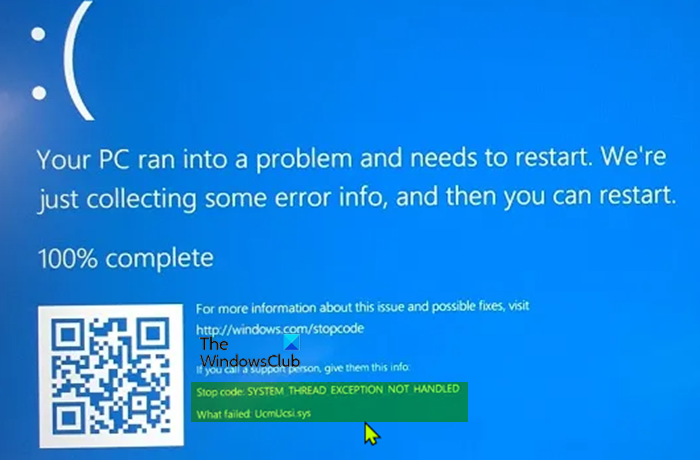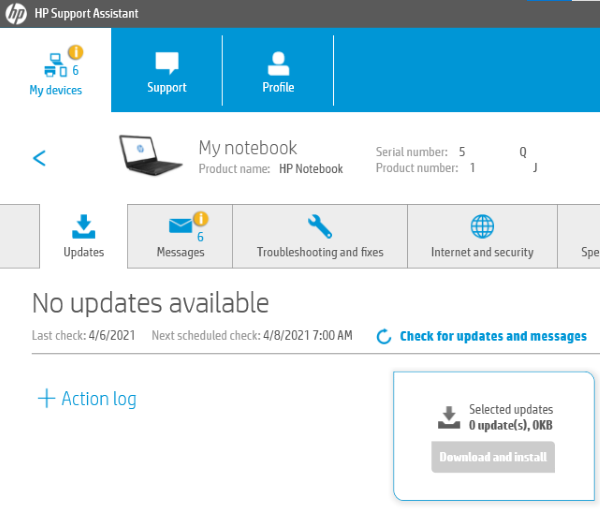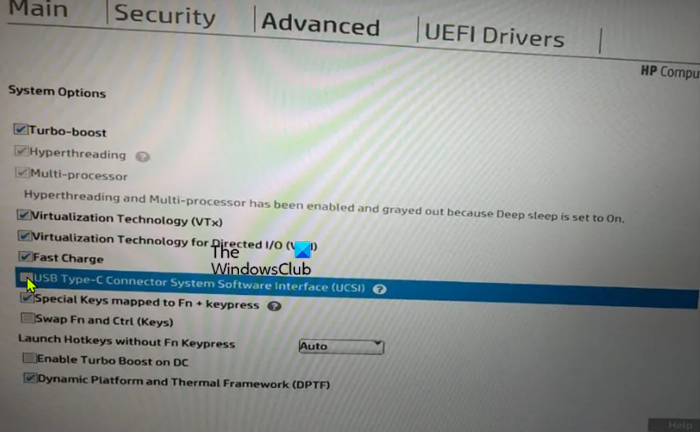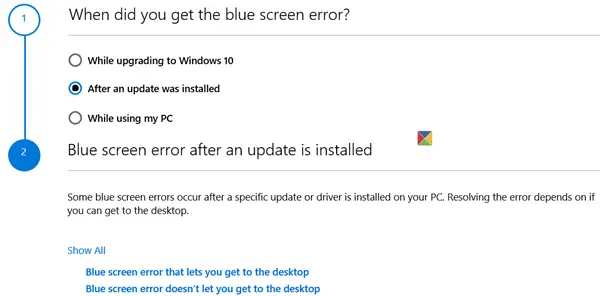As a Windows 11 or Windows 10 PC user, you may have encountered BSOD errors on your device. One of such error is the UcmUcsi.sys failed Blue Screen error. The UCMUCSI_FAILURE bug check has a value of 0x000001D8, and it indicates that the UCSI class extension has encountered an error. This post provides the most suitable solutions to fix this error.

What is UcmUcsi.sys?
USB Connector Manager UCSI Client files such as UcmUcsi.sys utilize the SYS file extension. This file is considered a Win64 EXE (Driver) file. The file is located in the C:\Windows\System32\drivers directory; where C: is the Windows installation drive – this letter might be different on your system.
When this error occurs, the computer may stop responding and display the following error on a blue screen:
Stop Code: SYSTEM_THREAD_EXCEPTION_NOT_HANDLED
What failed: UcmUcsi.sys
This error occurs when the UCSI (USB Type-C Connector System Software Interface) option is enabled in the BIOS. The UcmUcsi driver has encountered an error. The driver has found settings to trigger a system crash instead of a livedump.
UcmUcsi.sys failed Blue Screen error
A UCSI Command typically fails when UCSI firmware is not responsive and UcmUcsiCx times out on a UCSI command or the UCSI firmware has indicated an error in response to a critical UCSI command sent by UcmUcsiCx.
If you’re experiencing the UcmUcsi.sys failed Blue Screen error on your Windows 11/10 device, you can try our recommended solutions below in no particular order and see if that helps to resolve the issue.
- Update UcmUcsi driver/Update firmware
- Disable UCSI option in BIOS
- Run the Blue Screen Online Troubleshooter
Let’s take a look at the description of the process involved concerning each of the listed solutions.
If you can log in normally, good; else you will have to boot into Safe Mode, enter Advanced Startup options screen, or use the Installation Media to boot to be able to carry out these instructions.
1] Update UcmUcsi driver/Update firmware

As we have already identified the driver that’s triggering the BSOD error, to resolve the UcmUcsi.sys failed Blue Screen error that occurred on your Windows 11/10 device, this solution requires you to update the UcmUcsi driver as well as update the firmware.
Depending on your PC, manufacturers have made available special driver download software for their brands that you can use to update drivers and firmware:
- Dell Update utility will help you download or update Dell Drivers.
- Lenovo System Update helps you download Lenovo Drivers, Software, Firmware, Update BIOS.
- AMD users may use AMD Driver Autodetect.
- Intel users may use Intel Driver & Support Assistant.
- HP users can use the bundled HP Support Assistant.
You can consider using a third-party free driver update software. You can as well get the driver updates (if available) on the Optional Updates section under Windows Update. Also, if you have already downloaded the .inf or .sys file for the driver, you can manually update drivers via Device Manager or update driver via Command Prompt.
If your device drivers in question are already up to date or after updating the drivers the error in highlight isn’t fixed, you can proceed with the next solution.
2] Disable UCSI option in BIOS

To disable UCSI option in BIOS on your Windows 11/10 computer, do the following:
- Boot into BIOS/UEFI firmware.
- In BIOS Setup, select Advanced.
- Select System Options.
- Locate USB Type-C Connector System Software Interface.
- Uncheck the USB Type-C Connector System Software Interface option.
- Select Accept when the setting change notification appears.
- Select Exit.
- Select Yes to save changes and exit the BIOS.
The steps described above may vary depending on your PC make.
3] Run the Blue Screen Online Troubleshooter

In your attempt to fix any BSOD error, it’s recommended and best practice to run the Blue Screen Online Troubleshooter and see if that resolves the issue. This automated Blue Screen Online Troubleshooter from Microsoft in some cases will fix BSOD errors on your Windows 11/10 device. Alternatively, you can also troubleshoot blue screen errors using the SetupDiag tool – a Microsoft tool that can help PC users to diagnose and determine why an update or upgrade failed to apply, which is valuable data that can help resolve any problems.
That’s it! Hope you find this post helpful enough.
Related post: SYSTEM_THREAD_EXCEPTION_NOT_HANDLED (CMUSBDAC.sys)
What is USB connection manager?
The USB connector manager class extension recognizes that the USB function stack has loaded and hence the system is in the wrong state. It tells the UCSI driver to send Set USB Operation Role and Set Power Direction Role requests to the firmware.
What are USB drivers?
A USB client driver is the software installed on the computer that communicates with the hardware to make the device function. After successful installation, Windows loads the client driver every time the device is attached and unloads the driver when the device is detached from the host computer.
Why do I need USB drivers?
A software driver is an essential component because if it is not installed properly, the device will not work properly. Drivers for USB devices are often found on installation discs provided by the manufacturer.
Leave a Reply